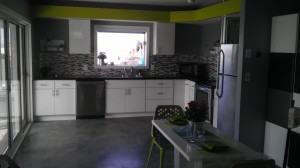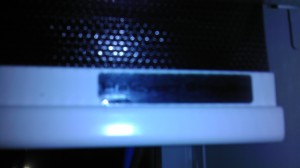Halycon shades were connected to our Chameleon Automation system. The shades pull down and can still let visable light in but keep heat out. This is because any heat from the sun and UV rays do truly affect indoor climate. With this product 99.9% of the UV rays are blocked. The Halycon Shades are just a little transparent at night so it would still be advisable to hang curtains by them. That way all you have to do is pull curtains shut to help keep more privacy within the home at night. This was added to help the techniques in the house of being more sustainable and to help save energy in regards to heating or cooling. The Chameleon automation system knows the times when the house is puling peak energy in from the solar panels, the temperature on the outside and inside, then also what the occupant prefers. Then automatically the shades will draw down in accordance with how to help the house keep cool by blocking sunlight, or to stay up to help keep rooms warm. Halycon shades have little motors in them that aid in the automatic process. The shade motors hooked up to our Chameleon system encourage the overall home to be more energy efficient because the home is using techniques to adapt to the environment. Its all about that adaptable lifestyle with this home. Any reduction of use on our small duct- chiller system the better. Blocking out sunlight with normal shades in a traditional home is a way to help with passive solar techniques. The shades simply block light to prevent unnecessary heating of the home. The difference with our shades is heat gets blocked but light still comes through. We could still see outside as if you have open windows in the daytime but don’t have to deal with heat. They are a LEED certified product and this means a potential customer can trust that Product information can be found at www.halcyonshades.com

The shade with the motor on kitchen window in the Chameleon House. It is currently being rolled down.














Recent Comments